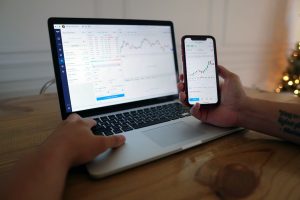Forex trading is a fast-paced, high-risk market where traders exchange currencies for profit. The trading process involves buying and selling currencies, and there are several confirmations required to make a successful trade. In this article, we will explore the three confirmations needed to buy or sell in forex trading.
Confirmation 1: Technical Analysis
The first confirmation needed to buy or sell in forex trading is technical analysis. Technical analysis is the study of price charts and market trends to identify potential trading opportunities. Technical analysts use a variety of indicators and tools to analyze the market, such as moving averages, trend lines, and chart patterns.
Technical analysis helps traders determine the best time to enter or exit a trade. For example, if a trader sees that a currency pair has broken through a resistance level, they may decide to buy the currency pair as they believe it will continue to rise.
Confirmation 2: Fundamental Analysis
The second confirmation needed to buy or sell in forex trading is fundamental analysis. Fundamental analysis is the study of economic and political factors that affect the value of a currency. Fundamental analysts examine economic indicators such as GDP, inflation, and interest rates and political events such as elections and geopolitical tensions.
Fundamental analysis helps traders make informed decisions about which currencies to buy or sell. For example, if a trader believes that a country’s economy is growing and its interest rates are likely to rise, they may decide to buy that country’s currency as they believe it will increase in value.
Confirmation 3: Risk Management
The third confirmation needed to buy or sell in forex trading is risk management. Risk management is the process of identifying potential risks and taking steps to minimize or mitigate them. Forex trading is a high-risk market, and traders must have a solid risk management plan in place to protect their capital.
Risk management involves setting stop-loss orders to limit losses, using leverage responsibly, and diversifying a trading portfolio. Traders must also be aware of their risk tolerance and adjust their trading strategies accordingly.
Conclusion
In conclusion, forex trading is a complex market that requires traders to have a deep understanding of technical and fundamental analysis as well as risk management. Traders must use technical analysis to identify potential trading opportunities, fundamental analysis to make informed decisions about which currencies to buy or sell, and risk management to protect their capital.
By following these three confirmations, traders can increase their chances of making a successful trade in the forex market. However, it is important to remember that forex trading is a high-risk market, and traders should only invest capital that they can afford to lose.





